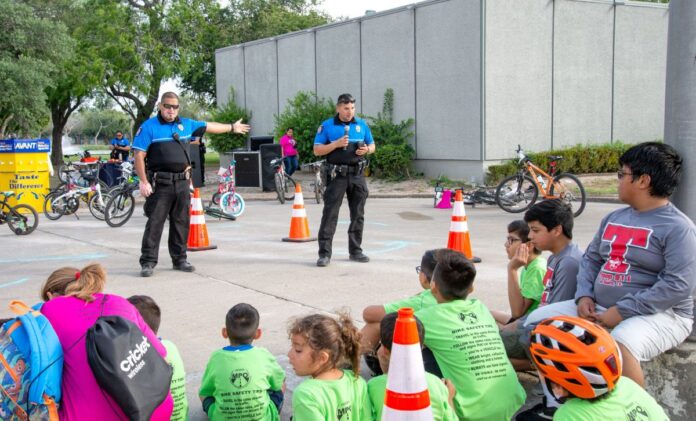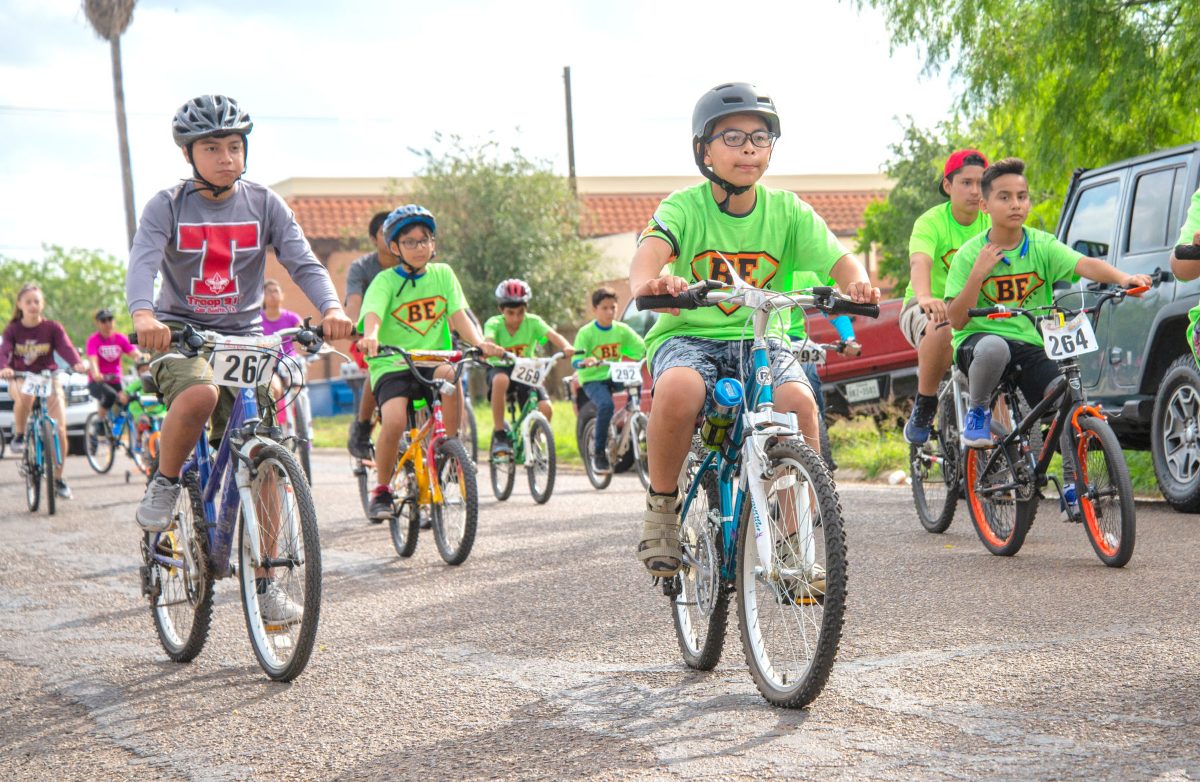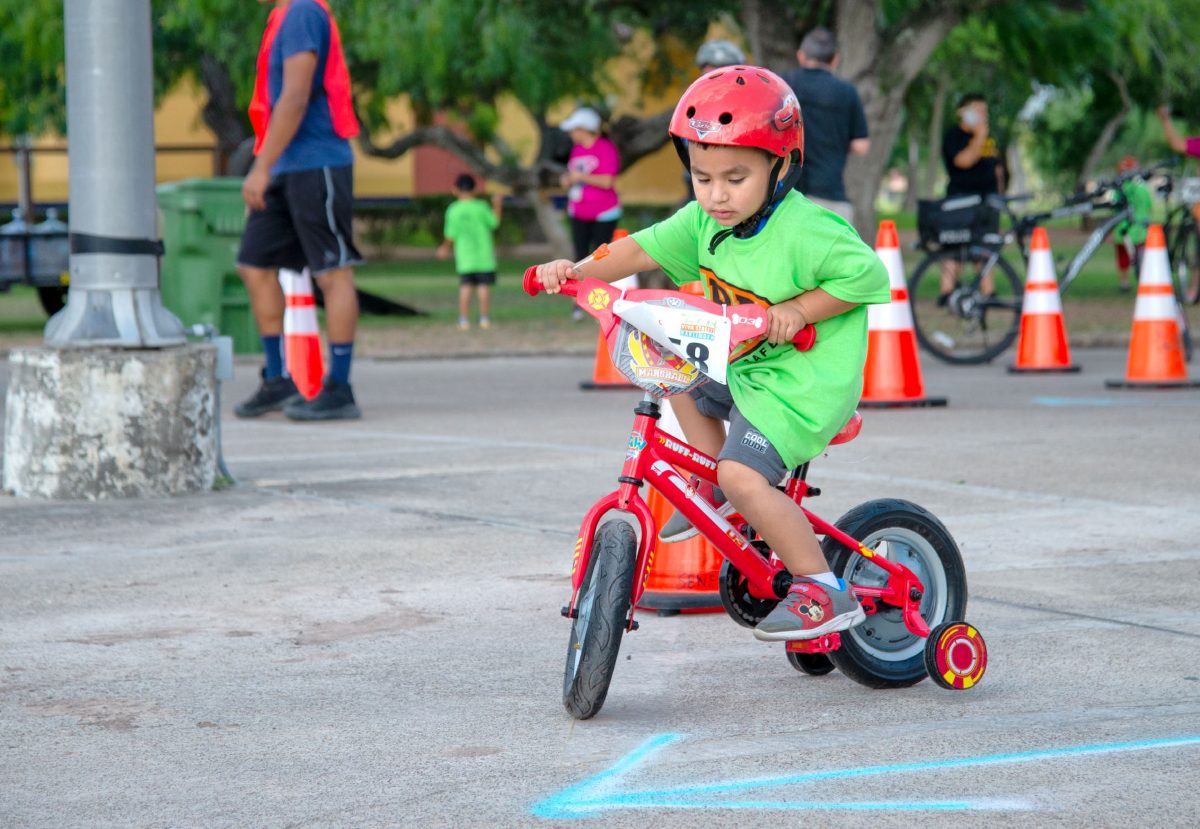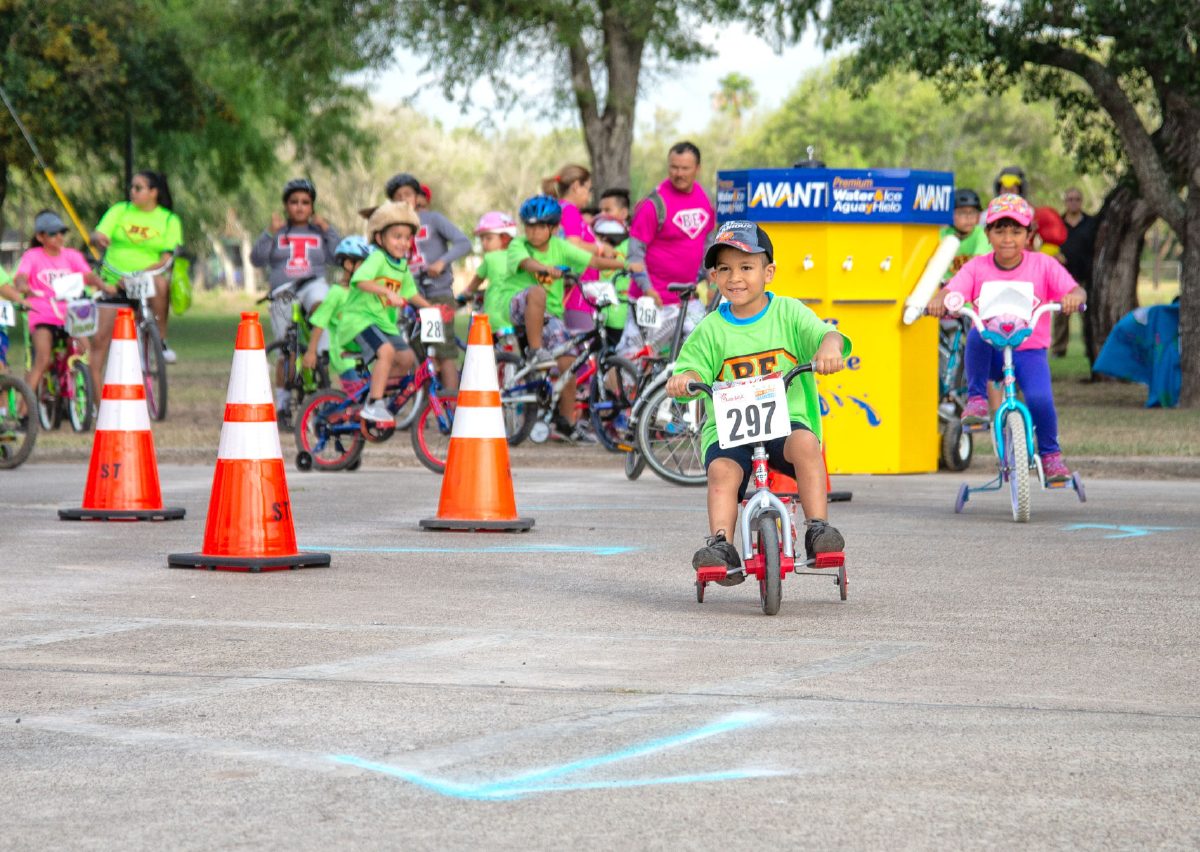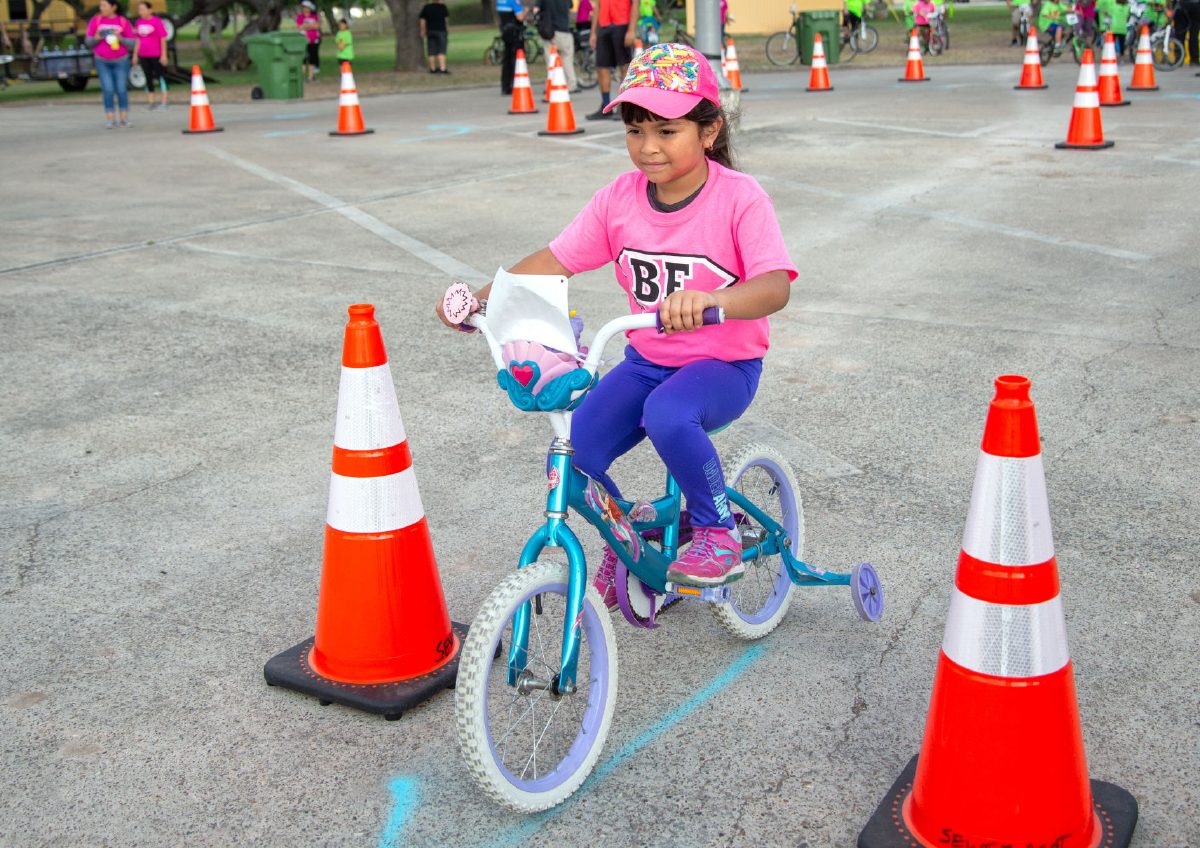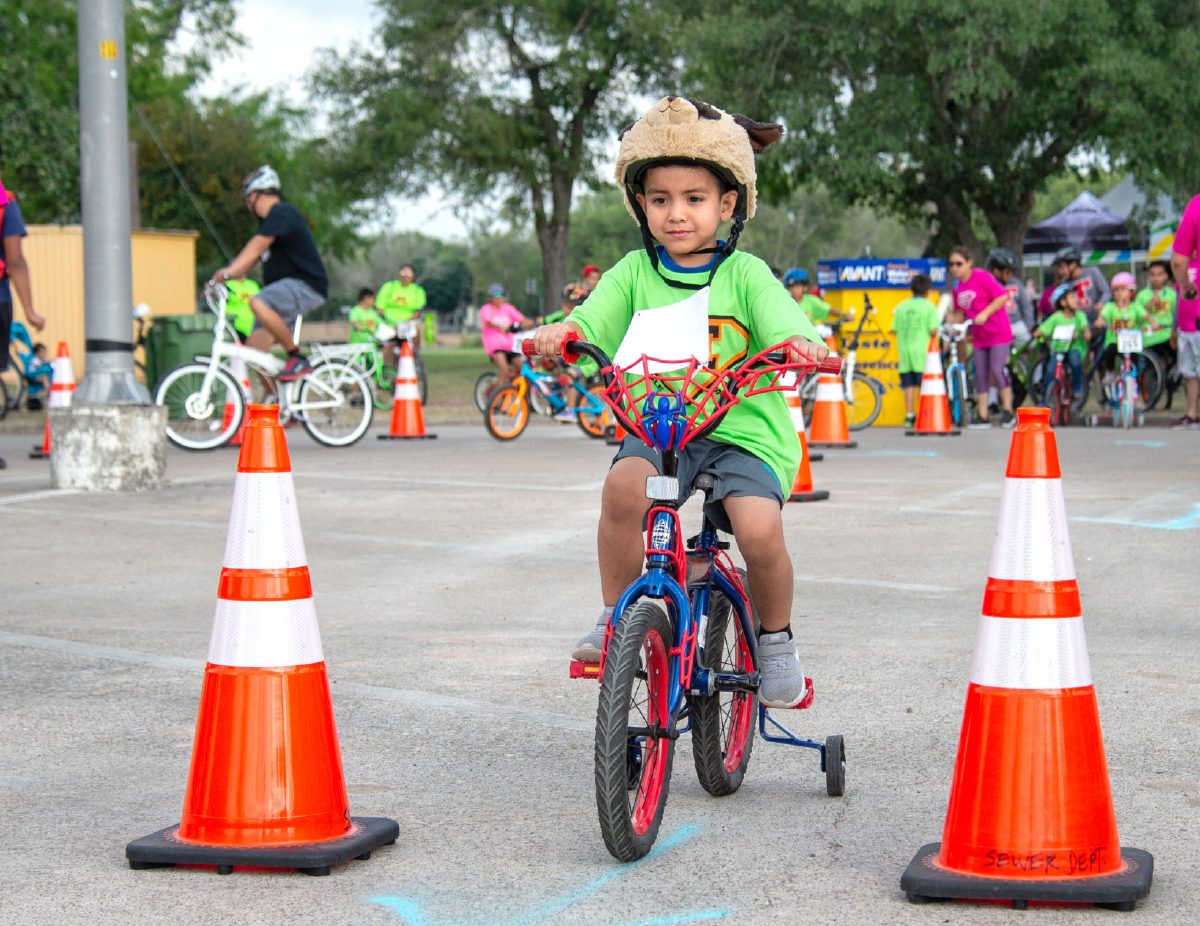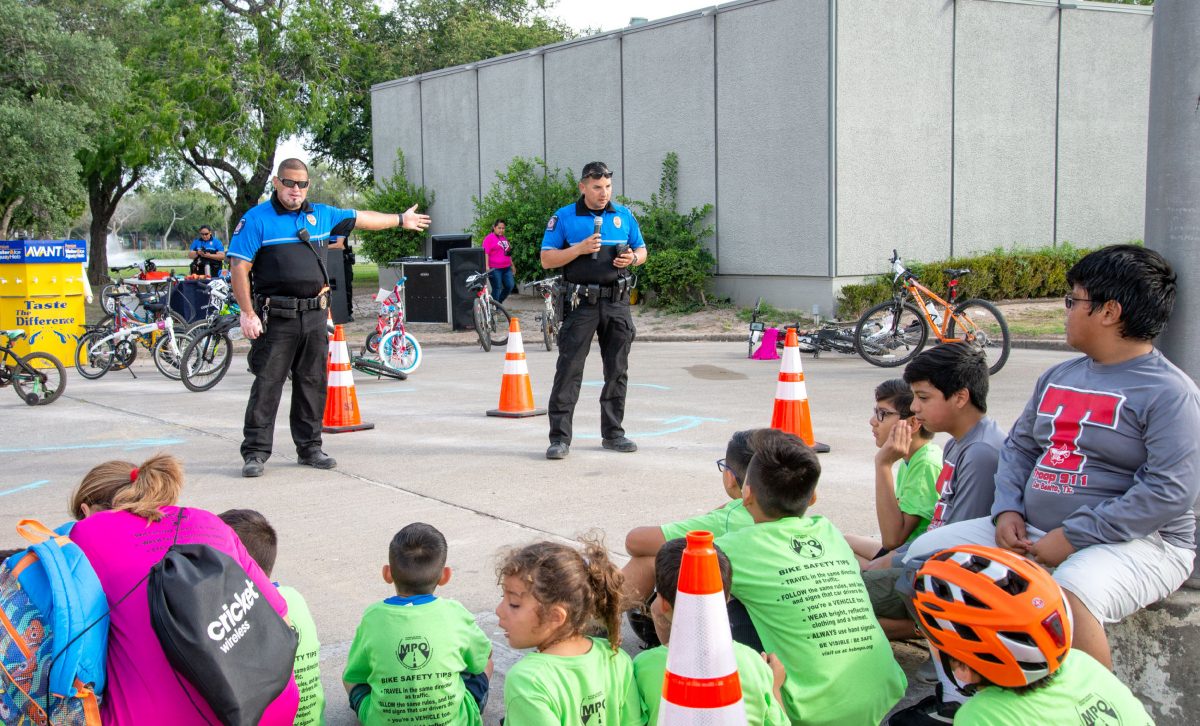SAN BENITO — Did you know your bicycle is a vehicle?
When you’re riding a bicycle on the street, it’s every much a vehicle as an automobile.
And like drivers, there are laws that govern cyclists. So when it comes to bicycle safety, it’s important to know the rules of the road.
Like many children, Betty Guerrero, 10, didn’t know her bike is considered a vehicle. But she found out soon enough and a whole lot more at a San Benito bike rodeo this past weekend.
More than 100 children and adults gathered at Heavin Resaca Park where they learned the rules for cyclists.
“I’m excited,” said Jose Loperena, 11, one of several scouts from Troop 911 looking forward to learning about bicycle safety.
“I want to learn about safety and the rules of the road,” he said.
And so he did.
San Benito Police Lt. Michael Cortez was there to explain that while bicycling is a great way to get into shape and have fun, to remain safe it is important to follow the traffic safety laws.
“When you’re operating a bicycle, you must ride in a lane or a bike lane,” Cortez said.
“You can ride two bikes to a lane,” he said.
Two riders, however, mean two separate bikes.
“One rider per seat,” he said matter-of-factly to his attentive audience.
Children and adults listened closely as they learned the rules. They learned they, too, must observe stop signs and traffic lights. In other words, they must stop at red lights, move when the light is green, and when the light is yellow … “slow down,” the children said.
Automobile drivers, he pointed out, are required to respect the rights of cyclists and vice versa. Bike riders must also make eye contact with car drivers when signaling with their arms.
An extended arm indicates a right turn, an arm pointed downward signals a left turn. A bike rider who raises an arm up is preparing to stop.
This was news to Betty, who rides regularly with her parents.
“I know you look before you cross the road,” she said. “I don’t know hand signals.”
Bicycle safety also requires some maintenance.
“The bicycle brakes must be able to make a skidding stop,” he said. “They have to be inspected.”
Riding at night also has certain requirements, Cortez said.
“You have to have headlights,” he said. “You have to be visible. You can have a red reflector on back or a red blinking light.”
The presentation went beyond laws to simple safety.
“Wearing a helmet is not a law but to be safe you should have a helmet,” he said. “You never know when you’re going to have a fall, so we recommend elbow pads, knee pads and gloves. But those are optional.”
Cortez said only on rare occasions do police officers issue citations to cyclists who put others at risk.
“We look at promoting education,” he said.
Elizabeth Loperena, who came with the boys from Troop 911, said the presentation was very productive.
“I feel it’s important for the kids to learn the rules just in case they’re out riding,” she said.
All the boys conceded they’d learned something they would use from now on, as did Betty.
She’d just returned from the 3-mile bike ride everyone took after the presentation, during which they practiced what they’d learned.
“I thought it was fun, it was safer,” she said as she sipped water.
• Ride with the flow of traffic
• Ride in a lane or a bike lane
• Use arm signals when making turns or planning a stop
• Obey traffic lights
• Stop at stop signs
• Only one person per bicycle seat
• At night, use a headlight.
• Riding at night also requires a red reflector or a red light on the back of the bike.
• Bikes must be inspected
• Bikes must have fully functioning brakes.
• Look both ways before crossing a road
• Cyclists must yield to pedestrians

